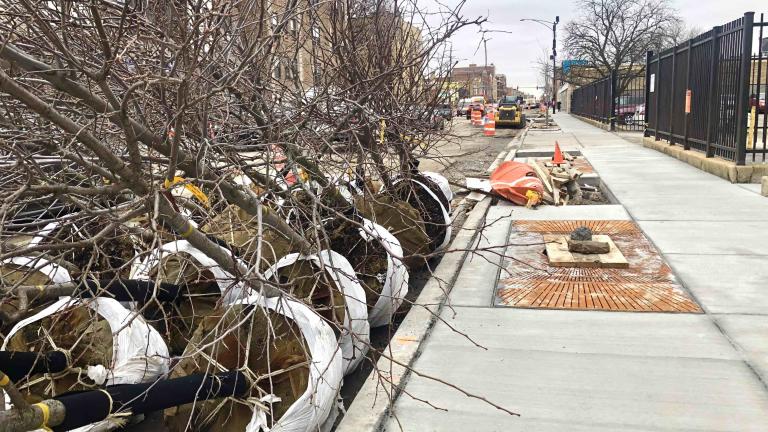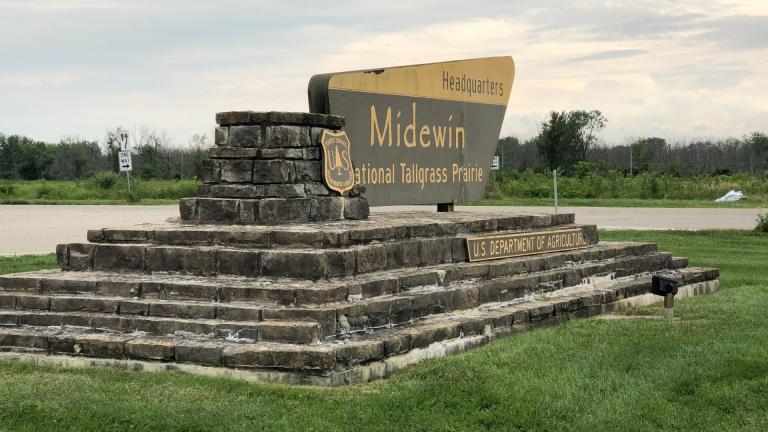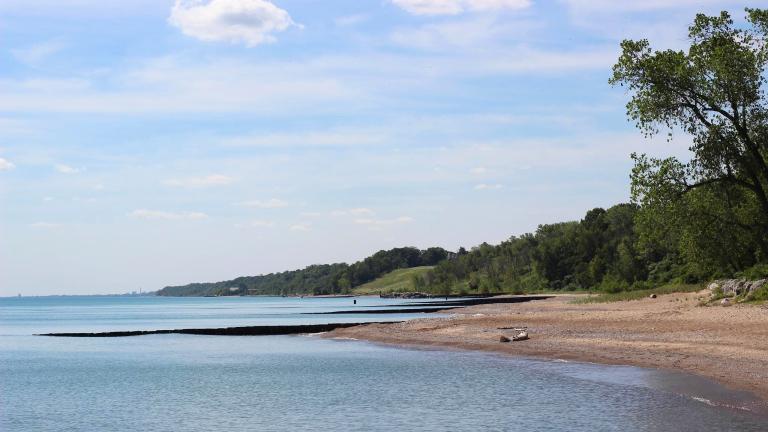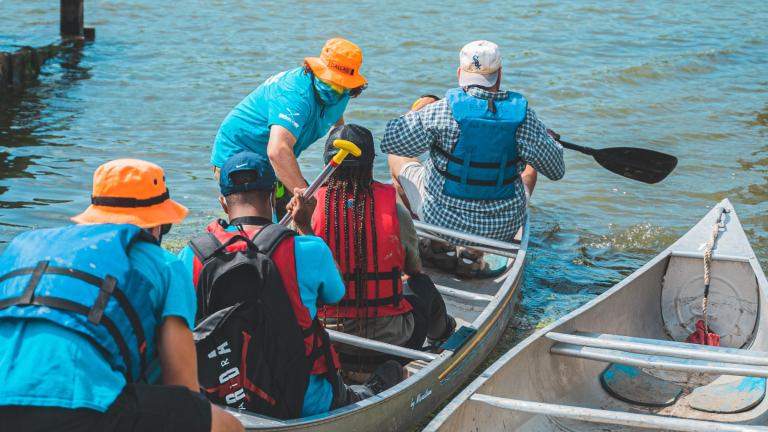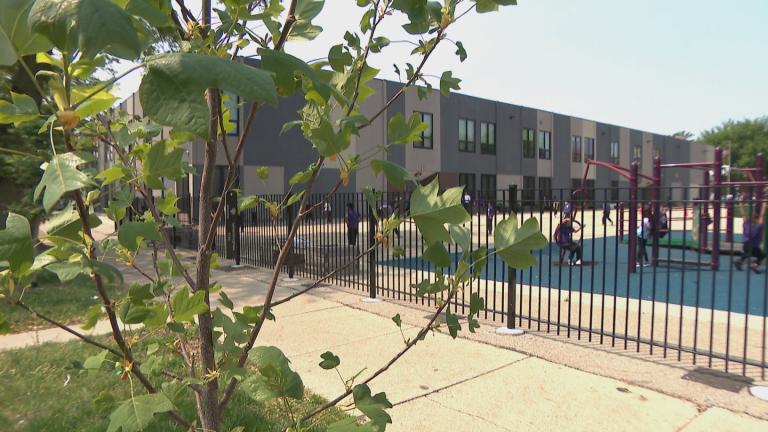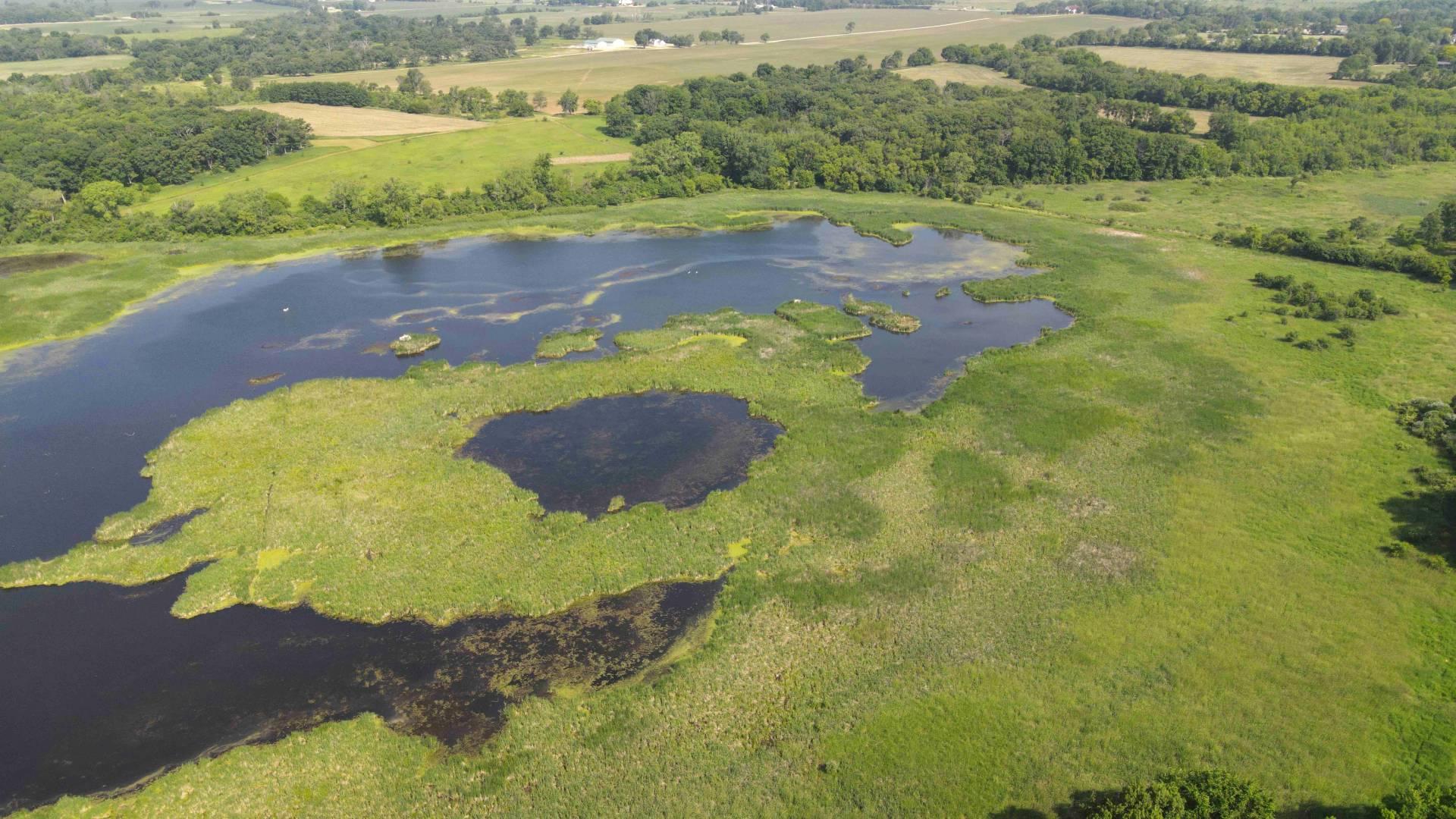 Tamarack Farms, overhead view. (The Conservation Fund)
Tamarack Farms, overhead view. (The Conservation Fund)
It’s not often that a thousand-acre parcel of land slated for real estate development winds up in the hands of conservationists. But such is the case with Tamarack Farms, purchased by the Conservation Fund, Illinois Audubon Society and Openlands, as the newest addition to the Hackmatack National Wildlife Refuge, the partners announced Thursday.
The 985-acre farm is now the single largest property within the boundaries of the refuge, which was established in 2012 and encompasses four conservation core areas that straddle McHenry County in Illinois and Walworth County in Wisconsin, all within the Nippersink Creek Watershed.
“In many ways, acquisition of Tamarack Farms represents a ‘dream realized’ for a small group who first came together over two decades ago to advocate for its protection as part of the National Wildlife Refuge system,” Steve Byers, chair of Friends of Hackmatack National Wildlife Refuge, said in a statement.
“It’s an extraordinary property,” Emy Brawley, Illinois state director for the Conservation Fund, told WTTW News. “It’s really rare to have a parcel that’s this big.”
Formerly a hunting club and retreat center, Tamarack Farms encompasses a variety of ecosystems, including a 75-acre wetland and 129 acres of oak savanna habitat, including one stand of oaks that’s almost 75 acres, Brawley said.
“McHenry County originally had about 150,000 acres of oak ecosystem, and under 20,000 remain,” she said. “And of that, under 1,000 (acres) are in the 100-acre-plus range. So this is the rarest of the rare to be able secure this much intact oak woodland in one place.”
What’s even more thrilling, Brawley said, will be the results of surveys still to come.
More than 200 species of birds, 70 species of fish, 30 species of reptiles and amphibians, 35 species of mammals and hundreds of plant species have already been recorded within the refuge boundary. As the conservation partners take possession of Tamarack, they’ll finally be able to gain a fuller picture of what treasures the property might hold.
Brawley credited the former owner for an unusual level of management of the farm’s natural areas, including actively clearing invasive buckthorn and conducting controlled burns.
“We don’t often see that,” Brawley said. “It gives us a big leg up.”
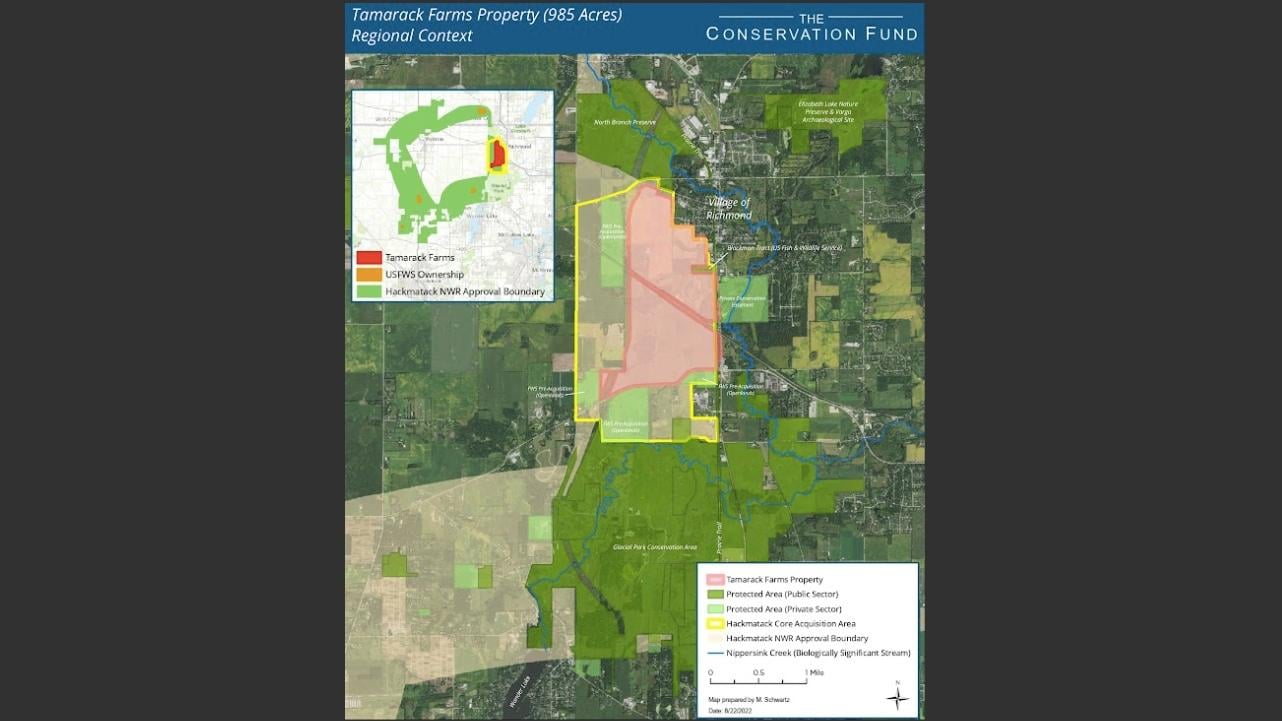 A map of Tamarack Farms within the broad Hackmatack National Wildlife Refuge. (The Conservation Fund)
A map of Tamarack Farms within the broad Hackmatack National Wildlife Refuge. (The Conservation Fund)
To put the Tamarack acquisition into context, it’s the largest in the Chicago region since the creation of Midewin National Tallgrass Prairie in 1996, according to the Prairie State Conservation Coalition, and contributes to a 5,600-acre macrosite.
That’s a giant leap forward for Hackmatack, which has been growing piecemeal in 12-acre, 35-acre and 156-acre spurts.
The vision laid out in 2012 by the U.S. Fish and Wildlife Service, along with its many public and private conservation partners, is for the refuge to ultimately encompass 11,200 acres — not in one large preserve or park but via a mosaic of loosely connected protected sites.
“It’s never going to have a gate, there’s never going to be one entrance,” Brawley said. “In the end, the importance isn’t going to be that we have a fully complete puzzle. It’s that there’s a welcoming place for people on every piece.”
Within that mosaic, Tamarack Farms fills an important gap between Glacial Park to the south and North Branch Preserve to the north, providing the kind of sprawling natural area seldom found in the greater Chicago region, with the exception of Midewin and the Palos Preserves.
 Glacial Park, with its distinctive glacial mounds, is one of the most visited sites with the Hackmatack National Wildlife Refuge. Tamarack Farms will now connect the park to the North Branch Preserve. (Patty Wetli / WTTW News)
Glacial Park, with its distinctive glacial mounds, is one of the most visited sites with the Hackmatack National Wildlife Refuge. Tamarack Farms will now connect the park to the North Branch Preserve. (Patty Wetli / WTTW News)
“This exceptional addition to the refuge will not only create habitat for numerous threatened and endangered species of plants and wildlife, but also present the perfect opportunity to enhance public interaction and appreciation of nature,” Jo Fessett, executive director of Illinois Audubon Society, said in a statement. “Tamarack Farms will provide a natural sanctuary for both people and wildlife.”
With its north-south orientation, the Glacial Park-Tamarack-North Branch corridor is also something of a hedge against climate change, enabling migration for species as their ranges may shift, Brawley said.
“Climate change is a stressor and so having this type of large landscape with topography, with creeks, with wetlands, it’s a resiliency generator,” Brawley said. “It would remove some of the stressors that come with fragmentation.”
Extending those benefits to people is very much part of Hackmatack’s mission as an urban wildlife refuge.
“I think we learned through the pandemic the power and importance of being outside, and how important that is for physical and mental health,” Brawley said.
The size of Tamarack, she noted, will allow visitors to shut out the rest of the world: “To be able to be an hour from Chicago and stand somewhere where the only noises are the birds and the bees does wonders for mental health.”
In fact, McHenry County is now even marketing itself as a nature destination, Brawley said. The potential for economic benefits to follow visitors is something conservationists believe could convince municipalities to preserve more open space.
A portion of Tamarack Farms will open to the public once the land is fully transferred to the Fish and Wildlife Service, a process that’s expected to take three years while the agency gathers the funds to buy it from the Conservation Fund and Openlands. (Roughly half of the acres are farmed under an existing agricultural lease the buyers are bound to uphold.)
Tamarack Farms was acquired for $10 million in federal funds “supplemented with significant private donations,” Brawley said.
Contact Patty Wetli: @pattywetli | (773) 509-5623 | [email protected]

